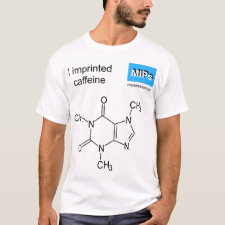
Authors: Gill RS, Marquez M, Larsen G
Article Title: Molecular imprinting of a cellulose/silica composite with caffeine and its characterization.
Publication date: 2005
Journal: Microporous And Mesoporous Materials
Volume: 85
Issue: (1-2)
Page numbers: 129-135.
DOI: 10.1016/j.micromeso.2005.06.003
Abstract: A molecularly imprinted "paper" (MIP) based on molecular imprinting of caffeine on cellulose/silica composites was successfully produced. Several techniques such as diffuse reflectance infrared spectroscopy (DRIFTS), transmission Fourier transform infrared (FTIR) spectroscopy using demountable path length cell, liquid-phase adsorption rate measurements, scanning electron microscopy, and BET specific surface area tests were used to characterize these MIP composites. These materials not only show enhanced binding capabilities towards the template molecules (caffeine) in comparison to blank experiments, but also were found to discriminate between theophylline and caffeine with relatively good selectivity. A cellulose:silica ratio of 4:2 was found to be close to optimal
Template and target information: caffeine
Author keywords: silica, fiber, cellulose, Filter, Cellulose, silica composite



Join the Society for Molecular Imprinting

New items RSS feed
Sign-up for e-mail updates:
Choose between receiving an occasional newsletter or more frequent e-mail alerts.
Click here to go to the sign-up page.
Is your name elemental or peptidic? Enter your name and find out by clicking either of the buttons below!
Other products you may like:
 MIPdatabase
MIPdatabase









